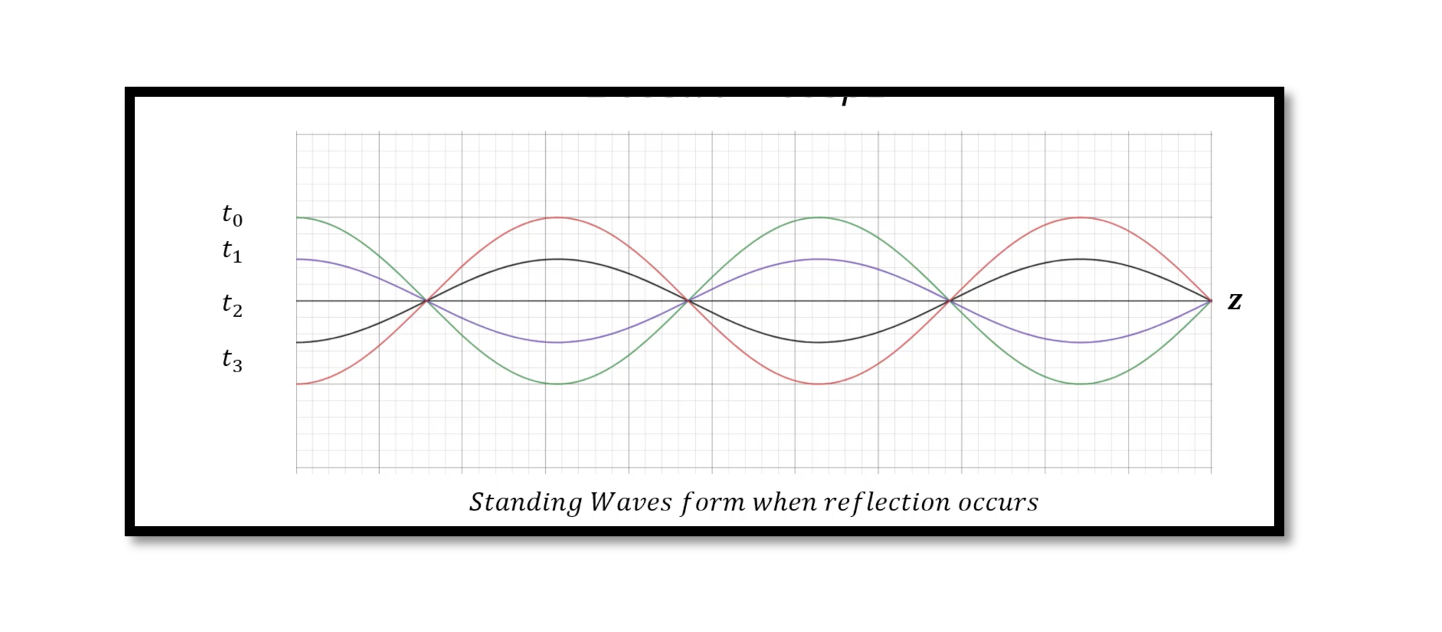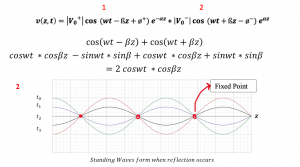
Transmission Line Reflection Equation
In the previous blog we discussed about Transmission Line Time Domain Equations where we showed how to convert the phasor equations to time domain equation and proved the wave propagation.
Example to prove Reflection Voltage
We have a lossless transmission line where ? = 0. From the previous blog, we know that the transmission coefficient gamma (γ) is equal to α+ßj, α becomes 0 in lossless. So if ? = 0 then |V0+| e-αz in equation|V0+| e-αz cos (wt – ßz+ø) equals 1. And also ø+ and ø– equals 0. We are finally left with two equations (1) and (2) shown below:
We observed the first part of the below equation in previous blog Time Domain Equation assuming there is only the first part but what happens if we have the second part of the wave? The second part is the reflection. The reflected equations for reflected voltage. If |V0–|=0 then there is only one wave. We will see what if |V0–|≠0:
So when we compare 1 and 2 we can see that in the first case, we are having a phase shift however, the amplitude is constant. Hence, we can call it a flat wave although each time we have different voltages and equations. But the amplitude at peaks is constant. This is when there is no reflection as in 1.
In 2 if you study the superposition of these two waves in the second case there we have standing waves because each time amplitude is changing this time but the phase remains constant. The coswt is between -1 and 1. so for different time values for different wt you are going to have different cosine wt values.
The waves are not changing their phases, there’s no propagation but they’re just going up and down. The amplitude here is just getting low and high. Here amplitude depends on time. So when there is a reflection, we will see standing waves. It means that when you have a full reflection at fixed points you will never have any voltage value. For example at some z depending on your ß the voltage will be 0 and that’s why this is going to be the fixed point you never have a voltage here so that’s why we call these standing waves.
This is what happens on transmission lines we have different voltages at different times and if you have reflection, we’re going to have these wave shapes that are called standing waves but if you don’t have any reflection you are just going to flat wave we just call it flat wave we know the voltage change here but amplitude is constant so just don’t misunderstand sometimes when we say flat wave. The amplitude is constant but if you have reflection your amplitude is also going to change, and this change rate depends on the time value as you can see cosine wt.




